CHC symposium to showcase Alamo conservation initiatives
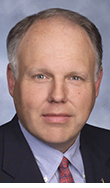
Charles Porter
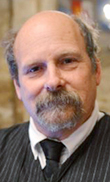
Bruce Winders
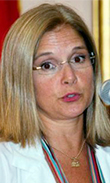
Pam Rosser
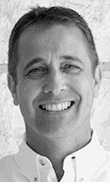
Patrick Sparks
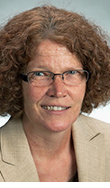
Michelle Bushey
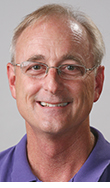
Robert Warden
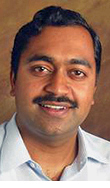
Unmil Karadkar
Lectures detailing how a revolutionary army scout preserved one of the [Alamo] (http://www.thealamo.org) ’s outer gates, research shedding new light on the Alamo’s use during its days as a Spanish mission, and current efforts to conserve the historic shrine to Texas’ independence will be presented by speakers from a wide variety of disciplines at the [Center for Heritage Conservation’s ] (http://chc.arch.tamu.edu) 16 th annual Historic Preservation Symposium, scheduled Feb. 20 – 21, 2015.
Registration for the symposium, “
[The Alamo: Structure of History]
(https://chc.arch.tamu.edu/symposium-2015/)
,” is available
[online]
(https://secure.touchnet.com/C21490_ustoresmobile/web/store_main.jsp?STOREID=20)
through Feb. 18. The event is open to conservation professionals, faculty and students, said Robert Warden, CHC director.
Friday keynote & reception
The symposium begins 6 p.m. Friday, Feb. 20 in Scoates Hall Room 208 with a keynote address by Charles Porter , an award-winning author and assistant professor in the School of Behavioral and Social Sciences at St. Edward’s University in Austin.
Porter will tell how scout Blas Herrera, who kept Sam Houston, Juan Seguin and other revolutionary commanders aware of Mexican troop movements, preserved the Alamo’s wooden outer gate, which is now on display at the [Bullock Texas State History Museum] (http://www.thestoryoftexas.com) in Austin.
He will also explain how Hererra’s descendants have preserved his Medina River family residence, one of the last remaining examples of huts built in 19th century Texas with timber, stone, straw and mud.
Porter’s 2011 book, “ [Spanish Water/Anglo Water] (http://www.tamupress.com/product/Spanish-Water-Anglo-Water,5188.aspx) ,”chronicles the often-contentious development of water rights in San Antonio. It captured the 2011 Texas Old Missions and Forts Restoration Association Book Award recognizingoutstanding books that contribute to a better understanding of Spanish colonial Texas. The book also earned a 2011 San Antonio Conservation Society Publication Award.
His new book, “ [Sharing the Common Pool: Water Rights in the Everyday Lives of Texans] (http://www.tamupress.com/product/Sharing-the-Common-Pool,7762.aspx) , " sets the standard in Texas water history scholarship, said Mike Cox of the Austin American-Statesman.
A reception at the SEAD Gallery,
[216 W. 26th Street]
(https://www.google.com/maps/place/216+W+26th+St,+Bryan,+TX+77803/@30.674161,-96.37478,17z/data=!3m1!4b1!4m2!3m1!1s0x864681a32383d8ef:0xb1bd160e19de4786)
in downtown Bryan, will follow Porter’s lecture.
Saturday morning speakers
The symposium continues at 9 a.m. Saturday, Feb. 21 in the Preston Geren Auditorium, located in Building B of Texas A&M’s Langford Architecture Center, with a lecture by Bruce Winders , the Alamo’s historian and curator.
A specialist in the early United States military and the Southwest, Winders has written several award-winning books about the Texas Revolution and the Mexican War, including “ [Crisis in the Southwest: The United States, Mexico and the Struggle over Texas] (http://www.amazon.com/Crisis-Southwest-United-Struggle-American/dp/0842028013) ,” which earned Outstanding Academic Title in 2002 by Choice, the journal of academic and research libraries, and “ [Mr. Polk's Army: The American Military Experience in the Mexican War] (http://www.amazon.com/Mr-Polks-Army-Experience-University/dp/1585440337) ,” which won the Jerry Coffey Memorial Book Prize for the best military history book in 1997.
Pam Rosser , the Alamo’s conservator, will present “Historical Investigations” at 9:40 a.m.
Prior to her position at the Alamo, Rosser, a conservator for more than 20 years, was a partner with Restoration Associates Limited, preserving and restoring interiors of historic buildings in the South.
Some of her past projects in San Antonio include: [San Fernando Cathedral] (https://www.catholicearth.com/index.php?option=com_community&view=profile&userid=31&Itemid=151) , [Mission Concepcion] (http://www.nps.gov/saan/planyourvisit/concepcion.htm) , the [Aztec Theatre] (http://www.aztecontheriver.com/history/) and the [Charline McCombs Empire Theatre] (http://www.majesticempire.com/info) .
Rosser graduated from University of the Incarnate Word in San Antonio and is a professional associate of the [American Institute for Conservation of Historic and Artistic Works] (http://www.conservation-us.org) . She is also a member of the board of directors for [Los Compadres de San Antonio Missions] (http://loscompadres.org) , the [Villa Finale Museum and Gardens] (http://villafinale.org/Home.html) and the [Rose Chapter of the National Charity League] (http://www.nclsarose.org) .
At 10:40 a.m., Patrick Sparks , president of [Sparks Engineering] (http://www.sparksengineering.com) , a consulting firm that specializes in structural investigation and repair, will present “Mortar Analysis as a Tool for a Historical Timeline.”
His expertise includes historic masonry conservation, nondestructive testing and
stabilization of critically damaged structures.
Sparks’ projects include stabilizing [Mission San Juan de Capistrano] (http://www.tshaonline.org/handbook/online/articles/uqs25) in San Antonio, rehabilitating the [Rio de Manati] (http://en.wikipedia.org/wiki/Manat%C3%AD_Bridge_at_Mata_de_Pl%C3%A1tano) bridge in Puerto Rico, and assessing World War II concrete structures associated with the [Battle of Peleliu] (https://one.arch.tamu.edu/news/2015/1/15/heritage-symposium/Peleliu%20Island) in the western Pacific.
A professional Fellow of the CHC, Sparks is also part of an [International Council on Monuments and Sites] (http://www.icomos.org/en/) structural conservation committee, has served as a director of the [Association for Preservation Technology International] (https://www.google.com/search?client=safari&rls=en&q=Association+for+Preservation+Technology&ie=UTF-8&oe=UTF-8) , is past president of the [Historic Bridge Foundation] (http://historicbridgefoundation.com) and is a board member of the [Concrete Preservation Institute] (http://www.cpi-foundation.org) . He is also co-founder and president of [Texas Dance Hall Preservation Inc] (http://texasdancehall.org) .
At 11:20 a.m., Michelle Bushey , professor of chemistry at Trinity University, will present “Paint and Color Analysis.”
Her research of [frescoes] (http://www.mysanantonio.com/community/southside/news/article/Research-deepens-understanding-of-sacristy-5160088.php) discovered 15 years ago in the Alamo’s sacristy that include elements of flowers, cactus leaves, pomegranates, diamonds, candelabras and other figures promises to shed new light on how the building was used during its days as a Spanish mission in the 1700s.
Honored as a distinguished scientist by the Texas Academy of Sciences in 2014, Bushey investigates objects of artistic and historical interest with analytical chemistry tools.
She is on temporary leave from Trinity for a two-year position at the National Science Foundation’s Division of Chemistry in the Mathematical and Physical Sciences Directorate.
Saturday afternoon speakers
At 2:35 p.m., Ivan Myjer , a conservator who heads [Building and Monument Conservation] (http://www.ivanmyjerbmc.com) , will present “Conditions Assessment of the Facade of the Alamo."
He recently completed five years of hands-on conservation work on the carved facade and sacristy window at San Antonio’s [Mission San Jose] (http://www.nps.gov/saan/planyourvisit/sanjose.htm) , has led conservation efforts of Roman and early medieval sculptures at the Isabella Stewart Gardner Museum in Boston, performed a structural assessment of the [Robert Gould Shaw Monument] (http://www.nps.gov/boaf/historyculture/shaw.htm) on Boston Common and supervised work on historic masonry buildings at Boston College, Harvard University, Princeton University and Cooper Union.
At 3:15 p.m., CHC director Robert Warden will present “West Facade Erosion Study,” part of a CHC effort he is leading to create highly-detailed 2- and 3-D models of the Alamo. The models are part of a database that is helping keep track of the building’s preservation work and maintenance issues.
In addition to aiding Warden’s erosion study, the CHC-created models will also be useful in determining environmental effects on the structure.
Warden is also leading CHC documentation efforts at an ancient [Maya site] (http://archcomm.arch.tamu.edu/archive/news/fall2008/stories/mayaresearch.html) in Belize and the former federal prison on [Alactraz Island] (http://one.arch.tamu.edu/news/2011/6/21/chcscans/) in San Francisco Bay. He also led a CHC team whose research findings helped [helped save] (http://one.arch.tamu.edu/news/2012/3/13/pointe-du-hoc/) an imperiled cliffside monument at Pointe du Hoc, France, that honors the D-Day heroics of U.S. Army Rangers led by future Texas A&M president Earl Rudder.
The day’s final presentation, “Alamo Database,” will be presented at 3:55 p.m. by Unmil Karadkar , assistant professor at the University of Texas’ School of Information.
Karadkar is exploring ways to integrate the Alamo’s 3-D models, high-resolution photographs, and conservation records to present a comprehensive digital, data-backed 3-D presentation of the site.
Tags
- arch gallery
- architecture
- archone gallery
- building a better texas
- chc gallery
- coa gallery
- events
- feature
- heritage conservation
- interdisciplinary
- lectures
- partnerships
- research
- rss
- technology
Related Posts

CHC study reveals decay on Alamo’s iconic west facade

Speakers to discuss preserving Texas sites at CHC confab

Research, creative work presented at annual symposium

Preservation experts focus on ‘Disaster’ at 13th CHC symposium

CHC symposium to feature heritage of African-Americans
Follow Us
Facebook Twitter Vimeo Youtube Flickr RSS
Recent Posts

Planning prof heads study of disaster housing aid

A message from the dean

Former student remembered as expert planner

Leading educator named new head of Architecture Dept.

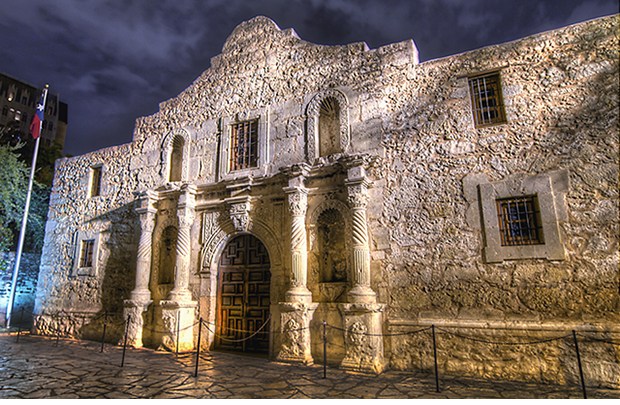



_thumbnail_small.png)
